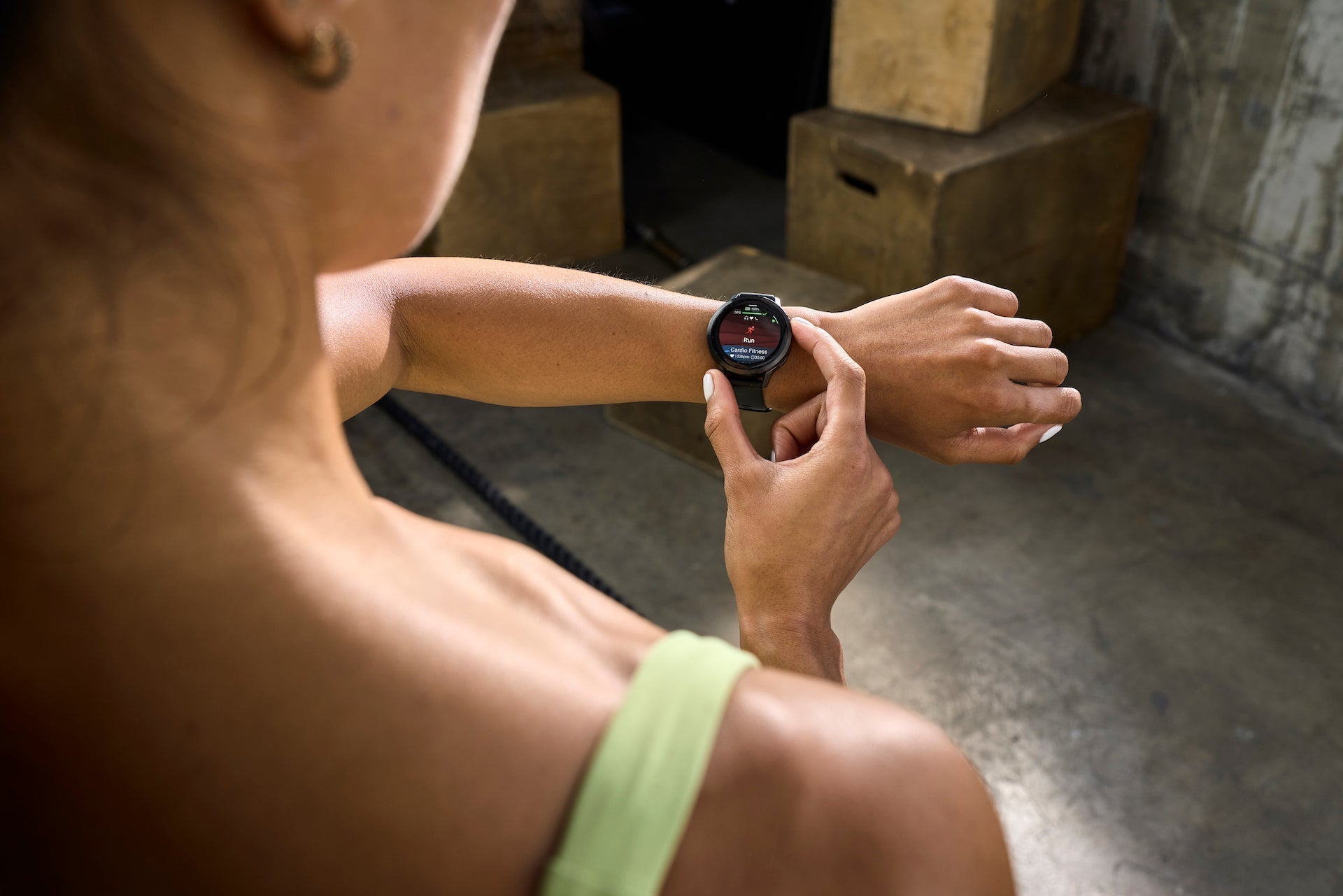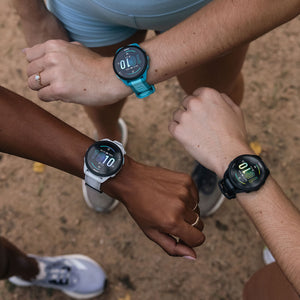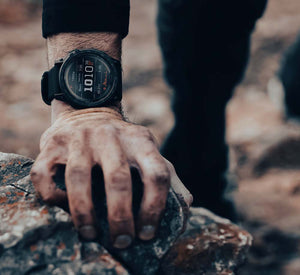
The Garmin Venu 4 — Your Guide to This Serious, Full-Featured Smartwatch
Garmin just dropped the Venu 4, and it’s not just another smartwatch—it’s their boldest blend of fitness, health, and style yet. Here’s everything you need to know before deciding if it’s the right watch for you.
Introduction: When It Launched & Why It Matters
Garmin officially unveiled the Venu 4 / Venu 4S on September 17, 2025.It marks the next big leap in Garmin’s mainstream smartwatch lineup, bringing many features that were once reserved for higher-tier watches. In short: with this one, Garmin is trying to offer a “best of both worlds” device — capable enough for serious fitness and training, yet stylish and smart for everyday life.
If you’ve been shopping around, you’ve likely noticed that Garmin’s lineup is crowded. Which model is right for you? That’s exactly what we’re helping you figure out below. But first — let’s break down what’s new, and whether those upgrades are meaningful.
Watch Garmin Venu 4 vs Forerunner 570 from Chase the Summit!
What’s New in the Garmin Venu 4
Here’s a quick snapshot of what Garmin added or improved in the Venu 4 compared to previous models:
-
LED flashlight (white + red modes)
-
Dual-frequency / multiband GPS
-
Sleep Alignment, Sleep Consistency, Health Status & Lifestyle Logging
-
Expanded training / performance metrics (load, readiness, race estimate etc.)
-
Mixed-session activity profiles (multi-sport within one session)
-
Metallized case (all-metal) and a more premium build
-
Shared Garmin OS platform with recent higher-end models
-
Accessibility features (spoken watch faces, color filters)
-
Slight trade-offs: one less physical button, somewhat lower battery in some modes
These aren’t just incremental tweaks — this is a step toward narrowing the gap between Garmin's “style + smart life” watches (Venu line) and their hardcore fitness/multisport devices.
Let’s walk through the biggest ones in more depth.
Deep Dive: New Features & Their Impact
LED Flashlight
One of the more talked-about additions: the Venu 4 includes a built-in LED flashlight with multiple brightness settings (white and red) and even strobe modes. You can activate it via a long-press of a button. Garmin even suggests it could be useful during nighttime runs, or when walking in low-light settings.
In practice, it’s a nice-to-have (not a game-changer) — it won’t replace a headlamp for serious night trail runs, but for roadside safety or dim ambient settings, it’s a smart addition.
Dual-Frequency/Multiband GPS
Garmin has upgraded the Venu 4 to support dual-frequency/multiband GNSS, which helps improve accuracy in challenging environments (urban canyons, dense tree cover). This is a significant upgrade over Venu 3, which only supported “all-systems” GNSS (GPS, GLONASS, Galileo etc.) but not dual band.
It’s the kind of upgrade that “you’ll want it when the trees close overhead or buildings press in.” In early hands-on reports, DCRainmaker suggests the GPS is reliable so far, though real-world long-term tests will be more telling.
Sleep Tracking: Sleep Alignment & Consistency
Garmin is leaning hard into more advanced sleep analytics on Venu 4. Two of the headline features:
-
Sleep Alignment: how well your sleep rhythm aligns with your circadian (biological) clock.
-
Sleep Consistency: how regular your bedtimes and wake times are over time.
To enable Sleep Alignment, the device needs a ~3-week baseline of sleep data. Garmin also bundles this into a broader Health Status feature, which watches for anomalies in resting HR, HRV, skin temperature, SpO₂ etc., and can alert you to potential health disruptions.
Finally, Lifestyle Logging is introduced: tracking habits like caffeine, alcohol, heavy meals, and seeing correlations with sleep, stress, body metrics over time. Garmin will roll it out to other watches in future firmware updates.
Together, these features make the Venu 4 stronger in the “wellness insight” category. If you’re someone who tracks how life habits affect recovery and stress, these tools can help surface trends you might otherwise miss.
Expanded Training & Performance Metrics
This is one of the biggest areas where Garmin is narrowing the divide:
-
The Venu 4 inherits a full Training Load / Performance Condition / Load Ratio / Race Estimate suite that previously was mostly in Forerunner/fenix models.
-
You get support for mixed-session mode (i.e. combine running + gym work + cycling all in one session and export as one activity).
-
It supports heat & altitude acclimation, auto-lap by timing gates, and projected finish time estimates.
-
The watch now runs on Garmin’s shared Garmin OS (same base code used on fenix 8, Forerunner 570/970, Venu X1).
One telling quote from Dave from Chase the Summit: “Why do both of these Garmin watches need to exist?” He’s referring to the Venu 4 and the Forerunner 570.
That may feel hyperbolic, but conceptually it’s not far off — you’re getting many (but not all) of the serious-sport features from the Forerunner line in a more day-friendly shell.
Build, Buttons & Hardware Changes
-
The Venu 4 uses a full metal case instead of just a bezel; thus it feels more premium.
-
Garmin removed one physical button (from three to two). You still rely on touchscreen for lots of interactions. This is a usability trade-off: it’s sleeker, but those who love physical button redundancy (especially in wet/rain) might feel the loss.
-
Accessibility is improved: spoken watch faces, spoken data readouts, color filters for colorblind users.
Trade-Offs & Battery
Because of the step up in display brightness and more demanding GPS mode, battery life has some compromises:
-
Venu 3 had up to ~14 days in smartwatch mode; Venu 4 drops that to ~12 days (45mm), ~10 days (41mm) in standard mode.
-
Always-on display mode reduces that substantially (e.g. 4 days in always-on for the 45mm)
-
GPS with multiband: ~12 hours (41mm) / ~17 hours (45mm)
-
GPS + music will cut that further (e.g. 6–9 hours)
So, for heavy users or folks who hate daily charging, that’s something to keep in mind.
How Venu 4 Stacks Up: Side-by-Side Comparisons
| Model | Case / Size / Build | Display | Battery (Smartwatch / GPS) | GPS / Navigation | Training / Sport Features | Health & Wellness | Price (Launch) |
|---|---|---|---|---|---|---|---|
| Venu 3 | Stainless bezel, polymer body, 41 mm or 45 mm | AMOLED (~1,000 nits) circular | ~14 days / ~20–26 h (all-systems) | All-systems GNSS (GPS, GLONASS, Galileo) | Basic workouts, Garmin Coach, limited advanced load/race metrics | Sleep tracking, Body Battery, SpO₂, ECG | ~$449 |
| Venu X1 | Titanium, ultra-thin, 41×46 mm | 2″ AMOLED (~2,000 nits), sapphire lens | ~8 days / ~14 h GPS | All-systems GNSS, full offline maps & routing | Advanced metrics: Training Status, Readiness, race estimate | HR, SpO₂, strong mapping, no ECG | ~$799 |
| Venu 4 | Metal case, 41 mm & 45 mm | Bright AMOLED, circular | ~10–12 days / ~12–17 h multiband GPS | Dual-frequency / multiband GNSS, course following | Full load/readiness suite, mixed-sport mode, auto-lap | Sleep Alignment, Health Status, Lifestyle Logging | ~$549 |
| Forerunner 570 | Rugged sport case, 47 mm | AMOLED, button-first interface | Comparable to Venu 4 | Dual-frequency / multiband GNSS, full navigation & routing | Complete advanced training suite, race predictions | Comprehensive health sensors (no ECG) | ~$549 |
Highlights & Interpretation:
- Venu 4 brings major upgrades over Venu 3, especially in GPS, training metrics, and wellness tracking.
- Garmin Venu X1 aims for mapping-first users with premium materials and a big display — but sacrifices battery and lacks ECG.
- Garmin Forerunner 570 is the more “sport tool” sibling to Venu 4 — same OS foundation, but built for users prioritizing buttons, ruggedness, and training use cases.
- The price jump from Venu 3 → Venu 4 is ~$100, which some early reviewers questioned, given the trade-offs.
Real-World Considerations (Pros/Cons & User Scenarios)
Pros (What Garmin “got right” with Venu 4)
- The addition of flashlight is a delight for casual outdoor use (walking, night safety).
- Dual-frequency GNSS is a smart upgrade for real-world accuracy, especially in tougher environments.
- The wellness suite (Sleep Alignment, Lifestyle Logging, Health Status) helps close the gap between “smartwatch mind” users and fitness geeks.
- Bringing in training / performance metrics (load, readiness, race estimate) gives much more value to runners and triathletes.
- The move to a common Garmin OS is beneficial — feature parity and shared improvements across models.
- The build feels more premium (metal) and the device is more polished than earlier Venu smartwatches.
Cons / Caution Points
- Battery — "better display + more sensors" comes at cost. Heavy users will notice.
- Losing a button might be a usability hit — in rain, gloves, or while navigating mid-run, physical redundancy helps.
- Some features require baseline data (e.g. Sleep Alignment) before full function kicks in.
- The premium price may make buyers pause: for some, Venu 3 at discount or Vivoactive 6 (see below) may suffice.
How Does Venu 4 Compare to Other Garmin Lines
Here’s a quick comparison in style, audience, and trade-offs with a few other Garmin models:
If you prioritize daily wear, polished wellness insights, and a balance of smart + sport, Venu 4 stands out. But if your emphasis is battery above all, or rugged outdoors durability, or ultra-long adventure use, other Garmin lines may still win.
Answering the Big Questions
If you’re training for a race or marathon, is Venu 4 a solid choice?
Yes — this is one of the first Venu models we’d confidently recommend for serious runners. You get coaching, training load, race predictions, heat/altitude insights, and solid GPS. It’s no long-distance ultra charger, but for 5K to marathon range, it’s well equipped.
That said, if you do frequent ultra or multi-day events with minimal charging opportunity, you might lean toward Forerunner/fenix models with longer GPS battery.
Are the heart rate sensors accurate?
Garmin continues to use its Elevate sensor family (v5 or a similar generation). In early hands-on previews, reviewers like DCRainmaker didn’t flag gross inaccuracies, though they caution sensor limitations exist (e.g. with very fast intervals, cold arms, wrist tattoos, etc.). For serious athletes, pairing with a chest strap or external HR sensor can still be a good fail-safe.
How good is the GPS accuracy?
Dual-frequency GPS is a meaningful upgrade and should offer better performance in obstructed settings. But like any wrist-based GPS, you're still subject to signal interference. The real proof will come through long-term user feedback and GPS track comparisons. Early reports are promising. Our review partners have always found Garmin to have accuracy above other brands.
What do trusted reviewers say?
- DCRainmaker: The Venu 4 is a major upgrade over Venu 3 — “just a Forerunner 570 in disguise” and “a massive step forward.”
- Dave from Chase the Summit, when comparing it to the Forerunner 570 says, “If you don’t need 5 buttons, the Venu 4 is the way to go.” He notes the premium feel and build-quality along with some of the extras perks as his reasons.
Any major downsides?
- Battery is more constrained under heavier use (GPS, display, multi-sport).
- The UI shift (losing one button) might slow some users initially.
- As with many Garmin launches, software bugs or firmware tweaks are likely in early weeks — it’s not unusual.
- Some features (e.g. Sleep Alignment) require baseline data before they’re fully effective.
Who Is the Venu 4 For — and Who Should Look Elsewhere
This watch is best if you:
- Want a daily wearable that’s polished, stylish, and smart.
- Do a mix of fitness, running, gym work, and want consolidated insights.
- Appreciate wellness insight: seeing how coffee, alcohol, sleep patterns, and stress tie together.
- Want advanced training metrics without jumping into full-on multisport/outdoor flagship territory.
- Prefer the balance of touchscreen + buttons in a sleek metal build.
Consider alternative options if:
- You need extreme battery longevity for multi-day events or expeditions.
- You’re focused heavily on rugged outdoor durability, deep dive or snow sports (Fenix line might suit better).
- You prefer more physical buttons or full UI control in rough conditions.
- Your primary use is basic fitness/activity tracking and you’d rather pay lower (vivoactive 6, Venu 3).
- You want full mapping + navigation as a core, with minimal compromises (Venu X1 or fenix might be stronger there).
Final Take: Where Garmin Venu 4 Fits In
The Venu 4 is a strong bridge between Garmin’s lifestyle-smartwatch models and its sport/performance watches. If you've hesitated in the past because mid-tier Garmins “felt like compromises,” Venu 4 is the first one that actually feels like a serious, full-featured watch and daily wearable.
For most runners, triathletes, or fitness-focused users, Venu 4 is absolutely in the ring as a contender. It has a few trade-offs, but Garmin made bold moves: better GPS, more health metrics, and premium build upgrades.
If your priorities lean heavier on ultra endurance, navigation depth, or rugged extremes, also consider Forerunner/fenix lines. But for someone who wants to wear one watch that handles both your training and your everyday life, Venu 4 is a compelling option.











